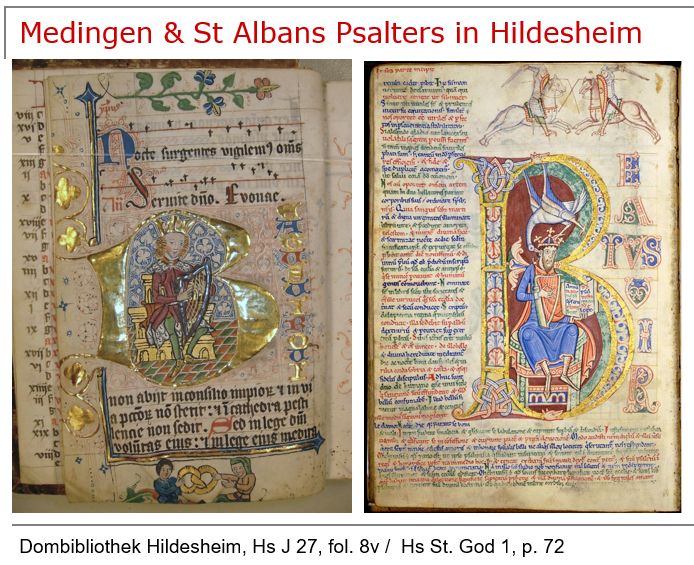My talk for the Medieval Summer at St Alban’s Cathedral: From Medingen with Love. Medieval Manuscripts travelling through Europe traced the criss-crossing of manuscripts between Germany and England and discussed their transition from devotional to antiquarian objects.
As preparation for the session, I invited participants to 1) make their own facsimile of a medieval manuscript, 2) watch a short introduction into the attempt to bring together manuscripts from German and English libraries, 3) reflect on the relationship between the digital and material object. The session itself focussed on a group of manuscripts produced in the convent of Medingen in the 15th century and followed their fate across Europe; it compared and combined this with the history of the St Alban Psalter which travelled the opposite way and on its journey rubbed shoulders with a number of Medingen manuscripts. Explore the St Albans Psalter.

Great talk and understandable to the layman like myself.
Love the quote ‘Not reading is a sin’.
Also much appreciated the comparisons with Zoom/Microsoft Word aspects.
And the materiality aspects made is more interesting.
One final question: Has anyone used the ‘Abc’ characters as the basis for a digital font- it would be great for kids to be able to write a word document using it.
Thanks for your comment! The quote ‘not to read is evil’ comes from the flyleaf of the manuscript HAB Wolfenbüttel, Cod. Guelf. 498 Helmst., (convent of Wölfingerode). I owe the knowledge of it to Eva Schlotheuber: Klostereintritt und Bildung. Die Lebenswelt der Nonnen im späten Mittelalter. Mit einer Edition des “Konventstagebuchs” einer Zisterzienserin von Heilig-Kreuz bei Braunschweig (1484–1507), Tübingen 2004. (Spätmittelalter und Reformation N.R. 24), p. 268. And great idea about the font; I don’t think there has been a Gothic alphabet been made based on a real handwritten ABC.